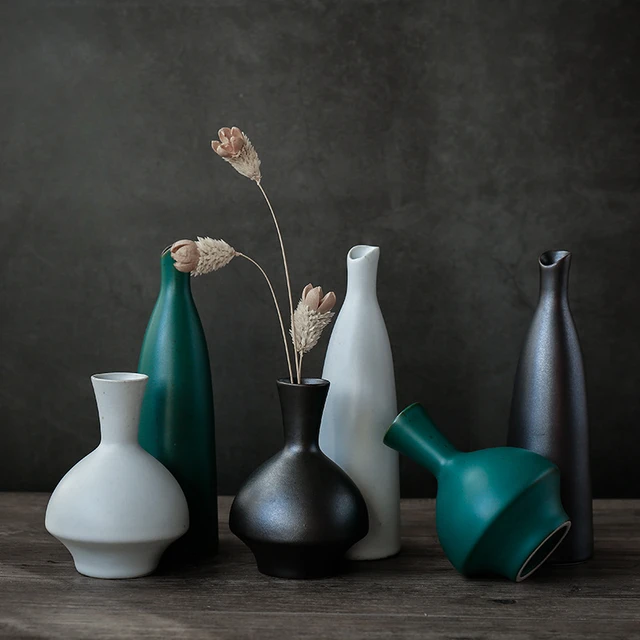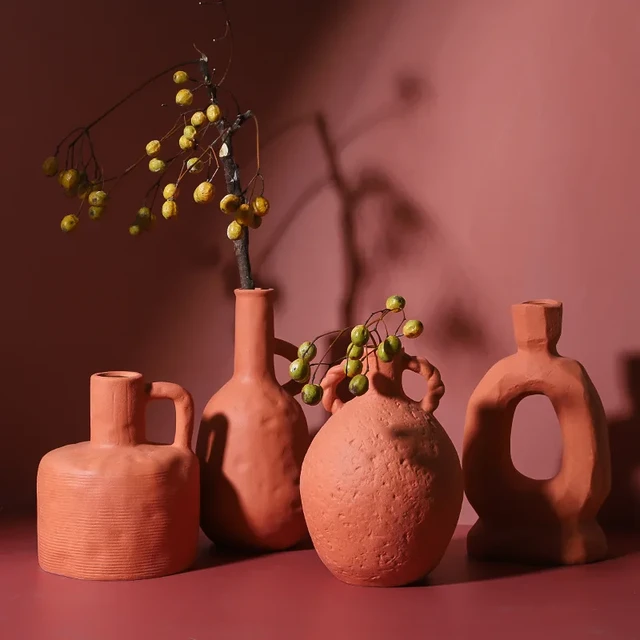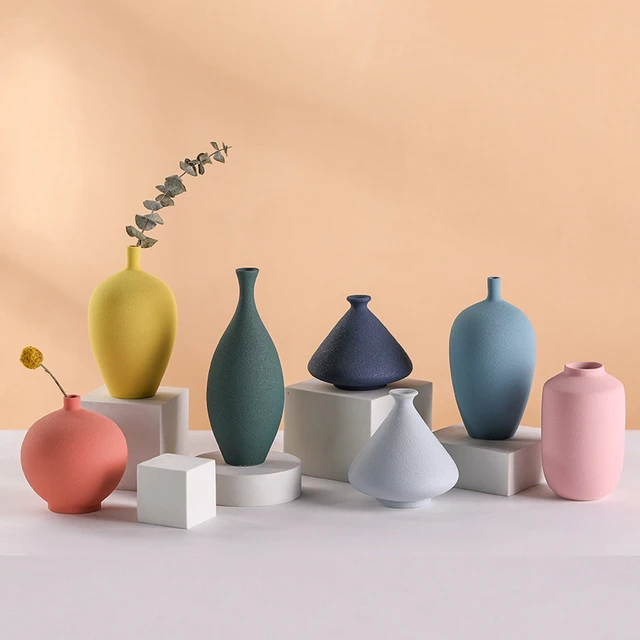 Introduction:
Introduction:
Still life ceramics are a testament to the enduring beauty and tranquility that can be captured in the art of clay. This art form has a rich history dating back centuries, where artists have embraced the challenge of depicting inanimate objects with precision, creativity, and imagination. In this comprehensive article, we will explore the world of still life ceramics, examining the techniques, subjects, and symbolic meanings imbued in these captivating artworks. From traditional renderings to contemporary interpretations, you will discover the timeless allure and artistic brilliance of still life ceramics.
 Here are some common artistic styles in ceramics:
Here are some common artistic styles in ceramics:
Ceramics can be created in various artistic styles or genres, each with its characteristic aesthetic and techniques. Here are some common artistic styles in ceramics:
Traditional or Classic Ceramics:
Traditional ceramics encompass styles rooted in historical or cultural traditions. Examples include ancient pottery styles like Chinese celadon, Greek black-figure or red-figure pottery, or Native American pottery. Traditional ceramics often exhibit elaborate craftsmanship, intricate patterns, and cultural significance.
Contemporary Ceramics:
Contemporary ceramics encompass various styles that emerged from the mid-20th century onwards. It includes a wide range of innovative and experimental approaches, such as abstract, minimalist, or conceptual expressions. Contemporary ceramics often push boundaries, challenging traditional forms and materials to create unique and thought-provoking works of art.
Folk or Naïve Ceramics:
Folk or naïve ceramics refer to artworks created by self-taught or non-professional artists who may use unconventional techniques and materials. These ceramics often depict simple, rustic motifs and capture the essence of rural or local culture.
Sculptural Ceramics:
Sculptural ceramics focus on three-dimensional forms rather than functional objects. Artists working in this style may explore abstract or figurative sculptures, employing techniques such as clay modeling, hand-building, or carving. Sculptural ceramics emphasize form, texture, and the visual impact of the artwork.
Decorative or Ornamental Ceramics:
Decorative ceramics emphasize the aesthetic appeal and decorative elements. This style includes intricate patterns, vibrant colors, and ornamental details. Decorative ceramics can range from delicate porcelain sculptures to decorative tiles, vases, or relief work.
Raku Pottery:
Raku pottery is a unique technique originating from Japan. It involves rapid firing at low temperatures and quick cooling, resulting in distinctive glaze effects, including crackles or unique metallic finishes. Raku pottery is often celebrated for its organic and unpredictable nature, capturing the essence of imperfection and spontaneity.
Freestyle ceramics:
Freestyle ceramics refers to a creative approach in ceramic art where artists break away from traditional rules or techniques and embrace a more spontaneous and experimental method of creation. It is a style that encourages artistic freedom, allowing artists to explore innovative forms, textures, glazing techniques, and unconventional materials.
Sgraffito ceramics:
Sgraffito ceramics have a long history and can be found in different cultural contexts, as artists from various regions have adopted this technique to create unique and visually stunning ceramic artworks.
Installation Ceramics:
Installation ceramics involve the arrangement of multiple ceramic pieces within a space to create immersive or site-specific installations. Artists working in this style may use ceramics as a medium to explore themes of space, environment, or social commentary.
These are just a few examples of the artistic styles found in ceramics. The beauty of ceramics lies in its versatility, allowing artists to explore various techniques, aesthetics, and narratives through this medium.
The Essence of Still Life Ceramics
The Tradition of Still Life:
Still life as an artistic genre has a long history, originating in ancient times and thriving during the Renaissance and Baroque periods.
These artworks depict carefully arranged objects as the main subject matter.
Clay as a Medium:
Ceramics, as a medium, adds depth and texture to still life compositions, creating tangible and tactile representations of mundane objects.
The versatility of clay allows artists to explore the inherent qualities of the material, from delicate porcelain to robust stoneware.
 Techniques and Artistry
Techniques and Artistry
Hand-Building:
Many still life ceramics are created using hand-building techniques, such as coil, slab, or pinch methods.
Hand-building allows artists to shape clay with precision and nuance, resulting in intricate details and distinctive forms.
Wheel Throwing:
Some still life ceramics are made using the wheel-throwing technique, involving the use of a potter’s wheel to shape the clay.
This technique offers artists the opportunity to create symmetrical vessels and efficient forms.
Subjects in Still Life Ceramics
Everyday Objects:
Still life ceramics often portray ordinary objects from the domestic setting—fruits, vegetables, kitchenware, flowers, and vessels.
These objects are elevated through artistic interpretation, capturing the essence and beauty of the ordinary.
Symbolic Meanings:
Still life ceramics can convey symbolic meanings and narratives. For example, a wilting flower may symbolize the passage of time or the fragility of life.
Artists infuse their compositions with layers of meaning, inviting viewers to contemplate deeper themes.
 The Aesthetics of Still Life Ceramics
The Aesthetics of Still Life Ceramics
Realism and Hyperrealism:
Many still life ceramics adhere to a realistic style, capturing objects with meticulous details, color accuracy, and lifelike textures.
Hyperrealism takes this a step further, creating artworks that appear almost photographic in their precision.
Experimentation and Abstraction:
Some modern interpretations of still life ceramics move beyond strict realism, experimenting with abstract forms, surreal juxtapositions, or unconventional materials.
These interpretations challenge traditional notions of still life, pushing the boundaries of the art form.
Symbolism and Cultural Significance
Vanitas:
Vanitas still life ceramics, inspired by the 17th-century Dutch tradition, symbolize the transience of life and the inevitability of death.
These compositions often include objects such as skulls, wilting flowers, and extinguished candles.
Cultural Significance:
Still life ceramics provide insight into the material culture and historical context of a specific time and place.
They reflect societal values, economic prosperity, and technological advancements.
 Conclusion:
Conclusion:
Still life ceramics continue to captivate and inspire with their ability to elevate ordinary objects, bringing beauty and meaning to the mundane. Whether depicting carefully arranged fruits, vessels, or symbolic compositions, these artworks showcase the skill, creativity, and artistry of ceramic artists. Still life ceramics bridge the gap between reality and artistic interpretation, inviting viewers to appreciate the aesthetics and symbolism infused in these captivating pieces. By exploring the world of still life ceramics, we can gain a deeper appreciation for the beauty, tranquility, and timeless allure captured in this exceptional art form.



